Verdict
If you’re looking for a gaming powerhouse that won’t break the bank, the Poco X6 Pro is exactly what you need. It’s not perfect, but for the most part, it delivers a flagship experience at a fraction of the cost.
Pros
- Powerful MediaTek processor
- Bright 120Hz OLED display
- Great main and selfie cameras
Cons
- Bloatware
- Advertisements in some system apps
- Weak ultrawide and macro cameras
Introduction
Xiaomi’s Poco sub-brand is known for delivering powerful mid-range handsets at astonishing prices. With the new Poco X6 Pro, that’s a trend that continues. This handset has some serious horsepower and great looks, all for just £369.
There are a lot of firsts to get excited about here, too. It’s the first model that we’re testing with MediaTek’s Dimensity 8300-Ultra inside, and it’s also the first to ship with Xiaomi’s new HyperOS operating system installed.
Plus, as an added bonus, it looks the part. I particularly like the vegan leather finish on the bold yellow colourway that I’m testing. The question is, what’s it like to live with? It’s been residing in my pocket for the last week or so in an effort to find out.
Design
- Vegan leather or glossy plastic back
- Plastic frame with flat edges
- IP54 rated
The Poco X6 Pro is available in three colour options: black, grey or yellow. I have the brightest option in for testing, the yellow one, which comes with a vegan leather rear panel. Meanwhile, the grey and black variants come with a high-gloss plastic back.
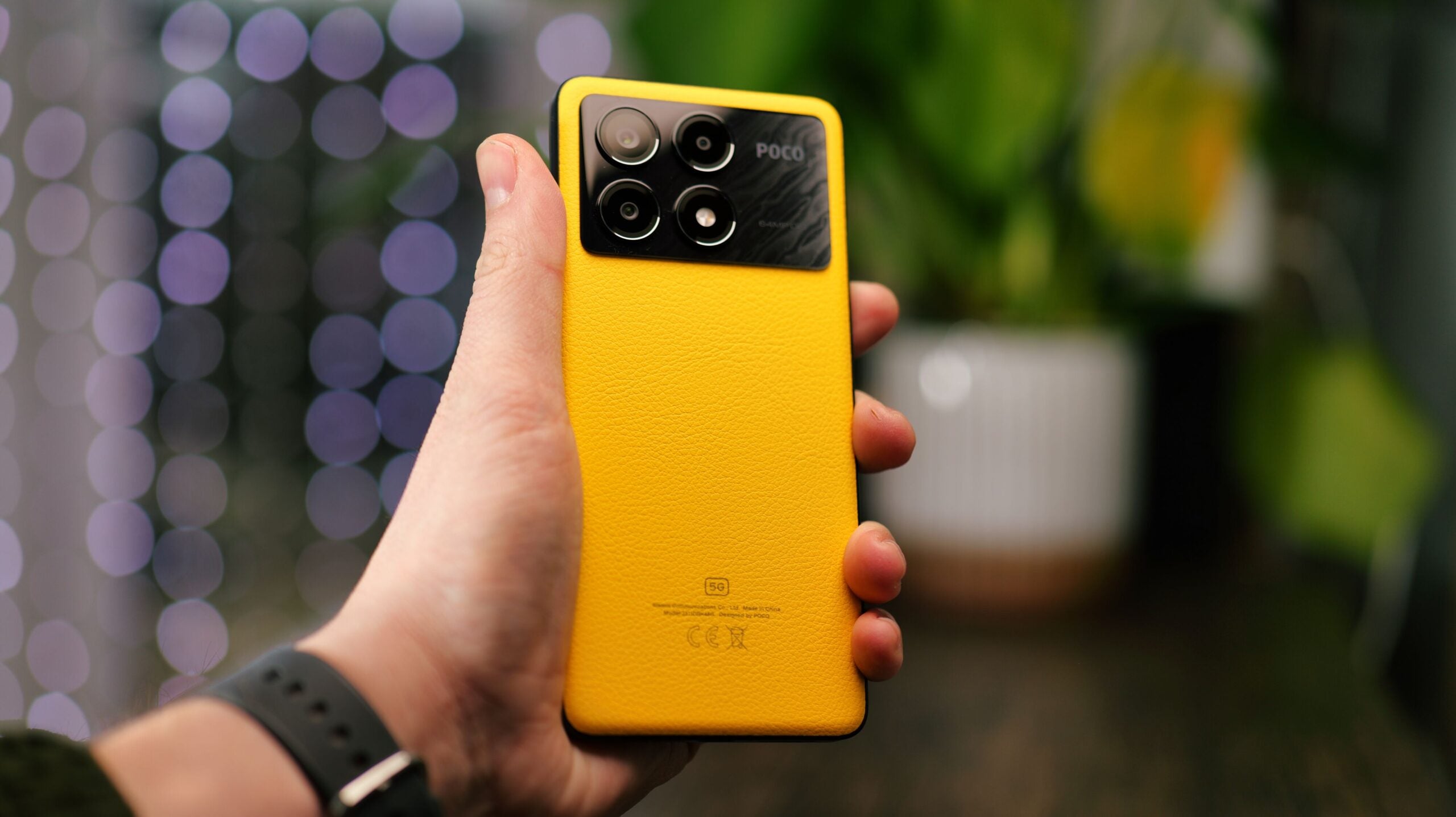
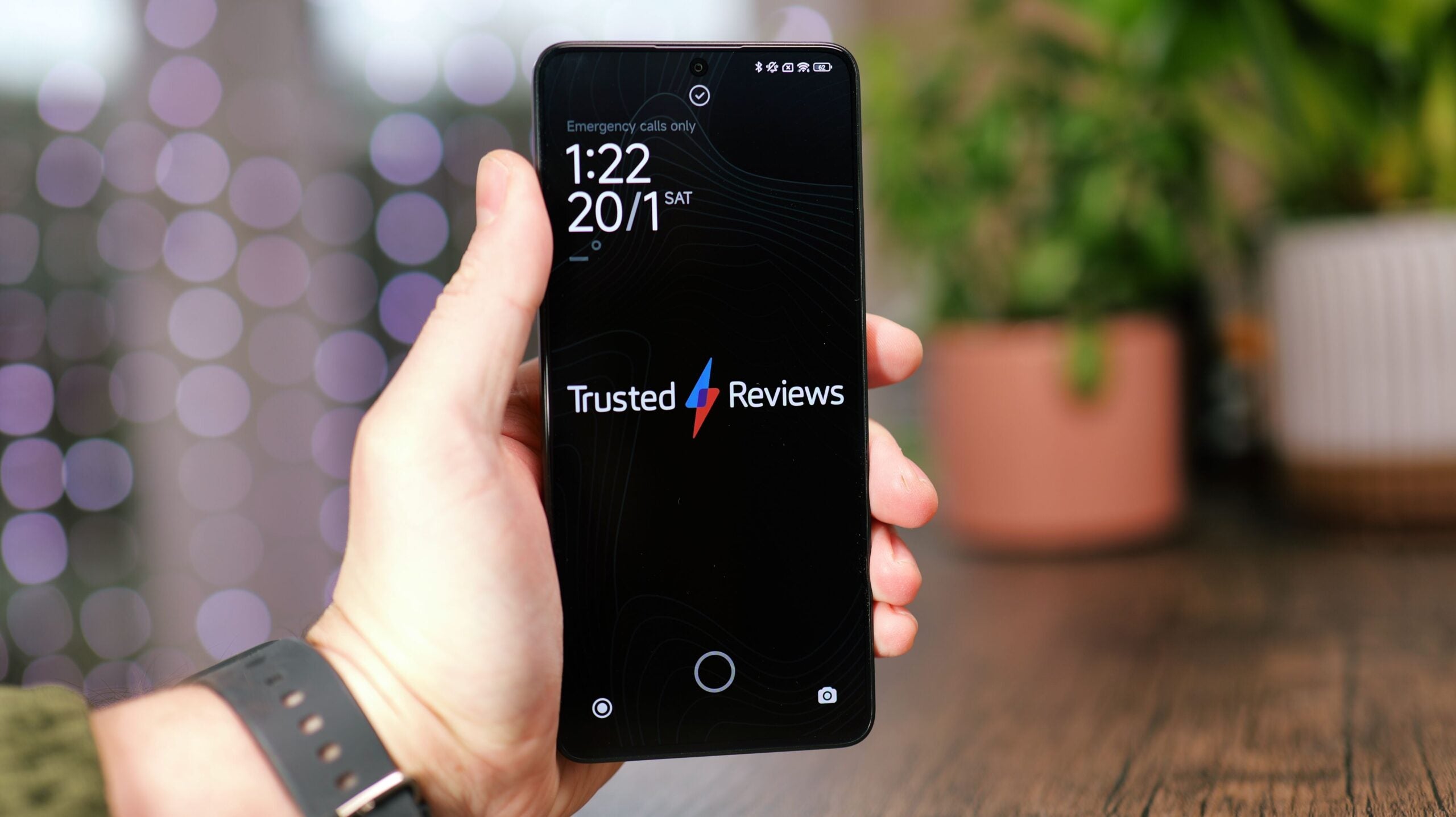
Personally, I quite like an eye-catching design, so the bumblebee-esque black and yellow finish is right up my street. Fingerprint smudges are also a bugbear of mine, and you don’t get any of those with the leather-effect rear panel, while the glossy design of the other colours looks like a print magnet.
The rear camera array is framed by a large semi-transparent black rectangle which has a wavy pattern etched into it. It looks great, in my opinion, and it also serves to reduce the wobble caused by the protruding lenses when the phone is placed screen-up on a table. There is still some slight rocking, however.


The phone is framed by a flat-edged bumper that reminds me of the iPhone. It has a matte metallic appearance, but it is in fact made from plastic. The power/lock button on the yellow model has a golden finish, which I thought was a nice touch.
With a 6.67-inch screen, it’s quite a sizable phone, and the boxy flat edges make it feel larger still. We’re all used to large phones at this point, and I found the X6 Pro perfectly comfortable to use. The plastic construction means that it’s fairly lightweight, too, coming in at just 190g.
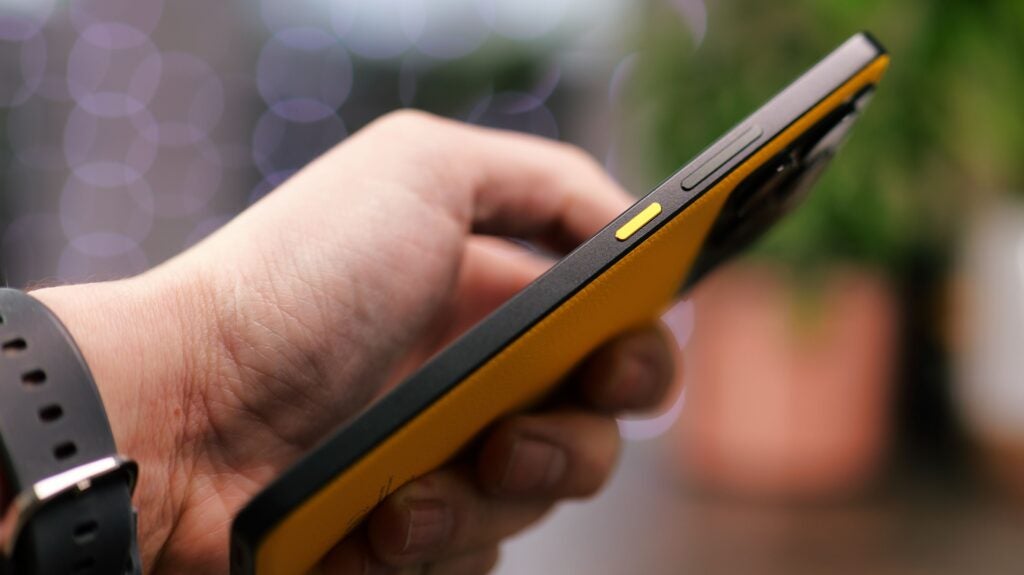

On the durability front, you get an IP54 rating for dust and water resistance. This means it’s not fully waterproof, but it’ll be fine in a rain shower. The display is coated with Corning Gorilla Glass 5, so it should also be quite resilient to damage.
There’s also a rather nice matte black TPU case included in the box, so you can keep your phone looking fresh. It’s a simple case, but it’s a cut above the standard transparent affair, and it’s nice to see it included at no extra cost.
Screen
- 6.67-inch AMOLED display
- 60-120Hz adaptive refresh rate
- Up to 1800 nits peak brightness
The display is nothing short of impressive. It’s completely flat – which I tend to prefer as it reduces unwanted reflections and colour shifting – and it’s very bright, able to output up to 1800 nits to compete with direct sunlight.


It’s an AMOLED panel, so you get lovely deep black levels, and it supports the DCI-P3 wide colour gamut to ensure accurate colour rendition.
The refresh rate is adaptable from 60-120Hz, which means it looks smooth and fluid while scrolling or playing a game but can automatically shift back to 60Hz on a static page to conserve some battery life.
The display has HDR10 support and, although it’s not listed in the spec sheet, my Netflix app can display Dolby Vision content on this phone, as well.
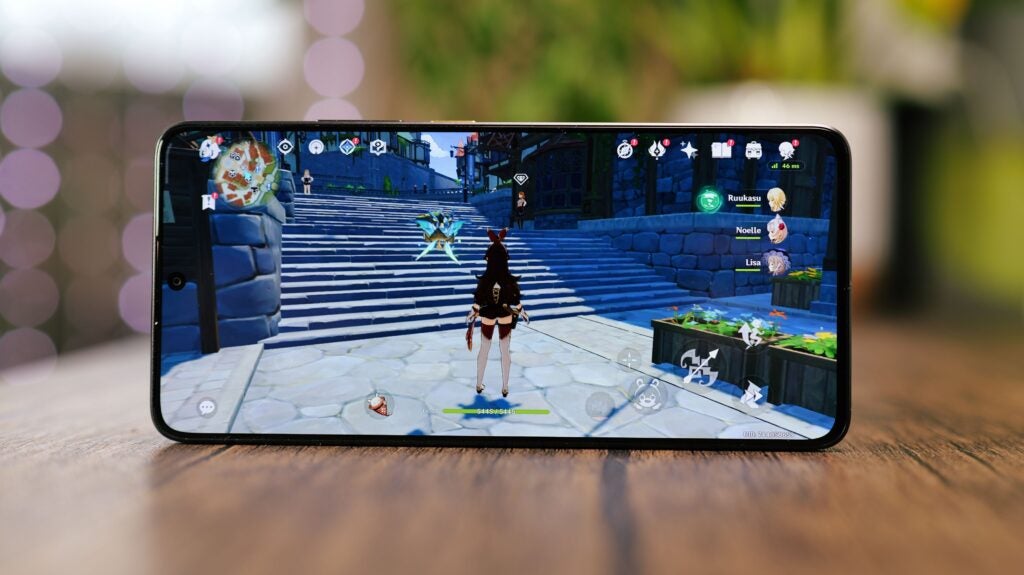

If you’re a gamer, you’ll be pleased to learn that there’s a solid touch sampling rate. It’s 480Hz by default, but this can be boosted to a 2160Hz instant touch sampling rate using the phone’s built-in Game Turbo mode.
There’s an in-display fingerprint reader towards the bottom of the display and it worked reliably throughout my testing period. My only wish is that it was positioned a little higher, as it’s not quite as convenient to reach as it is on some other phones.
Cameras
- 64MP f/1.7 main camera
- 8MP f/2.2 ultrawide, 2MP macro
- 16MP f/2.4 selfie camera
As is often the case with phones in this price bracket, we get a solid main and selfie camera, joined by the familiar and unimpressive 8MP ultrawide and 2MP macro combo.
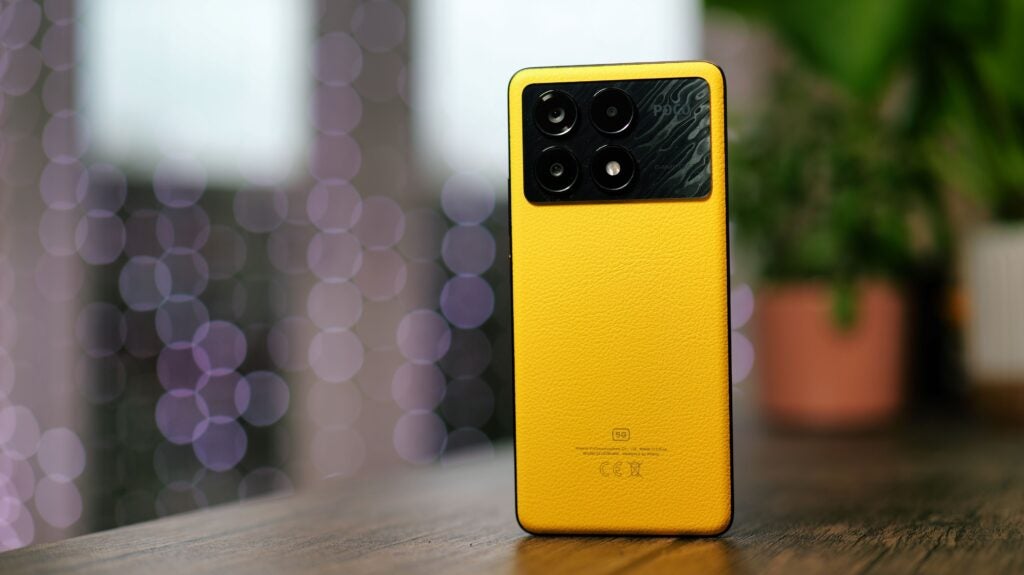

These auxiliary lenses aren’t quite up to the standard set by the other cameras, and are best avoided for the most part. The ultrawide has its uses, but the details are muddy and won’t stand up to much scrutiny, whereas the macro is just too low-res to be considered in most situations.


The main camera, however, is very decent. There’s plenty of detail, the colours look realistic and the HDR effect is more natural than we’ve seen from some other devices. Portrait mode works well too; the subject cutouts are quite accurate, and the level of background blur isn’t too overbearing.
You can also shoot at 2x in the Poco camera app, but this isn’t a separate lens, it’s a digital crop of the high-resolution main sensor. Despite that, the images look better than I anticipated. There’s plenty of detail retained and you can get very usable images from it.


It’s winter time in the UK, and that means that a lot of my photos were taken at night or in dimly lit scenarios. The main camera holds its own in these challenging conditions; it exposes well and rarely introduces any motion blur. There’s heavy processing going on by default, and I found that activating the dedicated night mode barely made a difference, so I can only assume it’s doing the same thing automatically.


The 16MP selfie camera is a bit hit-and-miss. I was really pleased with some of the images it captured, but more shots were slightly out of focus or had motion blur than I’m used to seeing. It’s a fixed-focus camera, and it feels like you have to be careful to stand in the sweet spot to get the best results.


When it comes to video, you can shoot at up to 4K 30fps on the main camera, while the selfie camera maxes out at 1080p 60fps. Videos come out looking decent and the stabilisation works well for panning shots, but there’s a bit of jitter while walking, and it’s worse at night. Still, it’s a lot more impressive than the video stabilisation offered by the similarly priced Honor Magic 6 Lite.
Performance
- MediaTek Dimensity 8300-Ultra
- 12GB LPDDR5X RAM
- 512GB UFS 4.0 storage
The MediaTek Dimensity 8300-Ultra is a seriously powerful processor, and our graphics benchmark results show that the Poco X6 Pro can hang with flagships from just a year or two ago. When it comes to similarly priced competition, it’s easily at the top of the stack.
In practice, this means it’s a delight to use on a day-to-day basis. I never found its performance to be lacking, even during heavy multitasking. It’s always quick and responsive, and apps open in a flash.
When it comes to gaming, the Poco X6 Pro continues to excel. I played a good amount of Genshin Impact in high settings at 60 fps and the X6 Pro handled it like a champ. It got a little warm after about 20 minutes or so, but it never became uncomfortable and the frames stayed consistent throughout.
There’s also a basic game overlay built-in to the operating system, and by default, it’ll free up some memory and optimise things when you open a game. It’s not the most comprehensive suite of tools, compared to a dedicated gaming handset like the RedMagic 9 Pro, but there’s enough to get your games running at their best. It even features a voice changer if you want to annoy your opponents in complete anonymity.
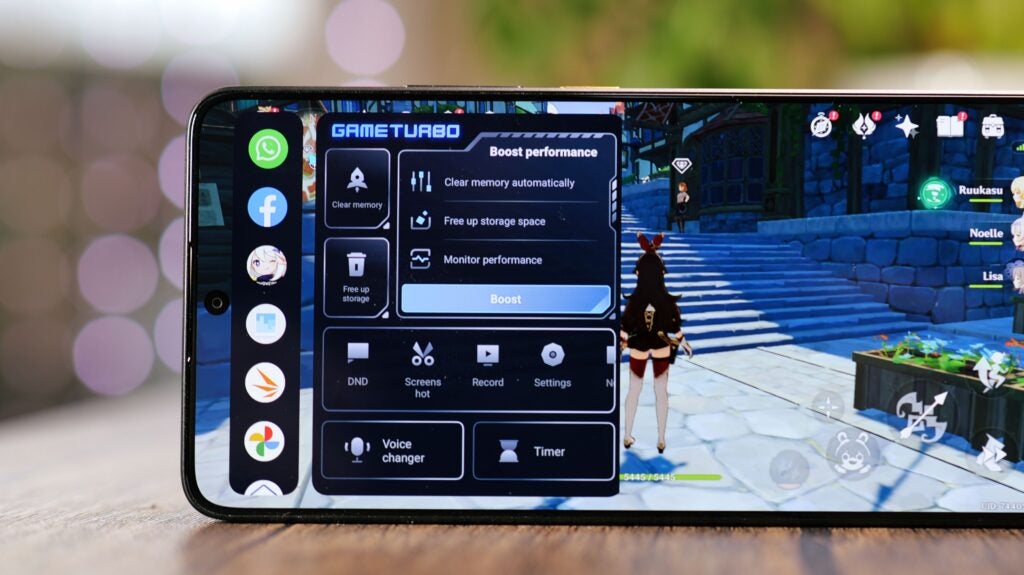

The Poco X6 Pro is one of very few phones in this price bracket to come with stereo speakers, and I love to see it. The speakers aren’t going to knock your socks off, there’s a distinct lack of bass and they’re far from the loudest that I’ve come across, but they’re miles better than any mono speaker setup.
Software
- Xiaomi HyperOS
- Based on Android 14
- Plenty of bloatware
This is one of the first phones to ship with Xiaomi’s new operating system installed right out of the box, so I was quite excited to try it out. However, it immediately became apparent that HyperOS is almost identical to MIUI, so this development is a little less significant than I first imagined.


There are changes, but they’re subtle, and you really have to be looking for them to notice what’s changed. It’s mainly aesthetic tweaks, like the way the quick-settings shade looks and the way the camera menu is hidden in the default camera app. The changes look nice, but they don’t dramatically change the way you interact with the phone.
So, the reality is, if you used a recent Xiaomi or Poco device, you’re in for a familiar experience. If you haven’t, the main difference between this and other Android skins is that the notifications and quick settings are separated, and can be accessed with a swipe from the right or left side of the display – much like you would on an iPhone.
It’s quite stylised compared to stock Android, but it’s a clean and polished look that I’m fond of. Some apps have custom icons, and I thought it was quite funny that X (formerly Twitter) still has the blue bird icon. It’s an improvement if you ask me.
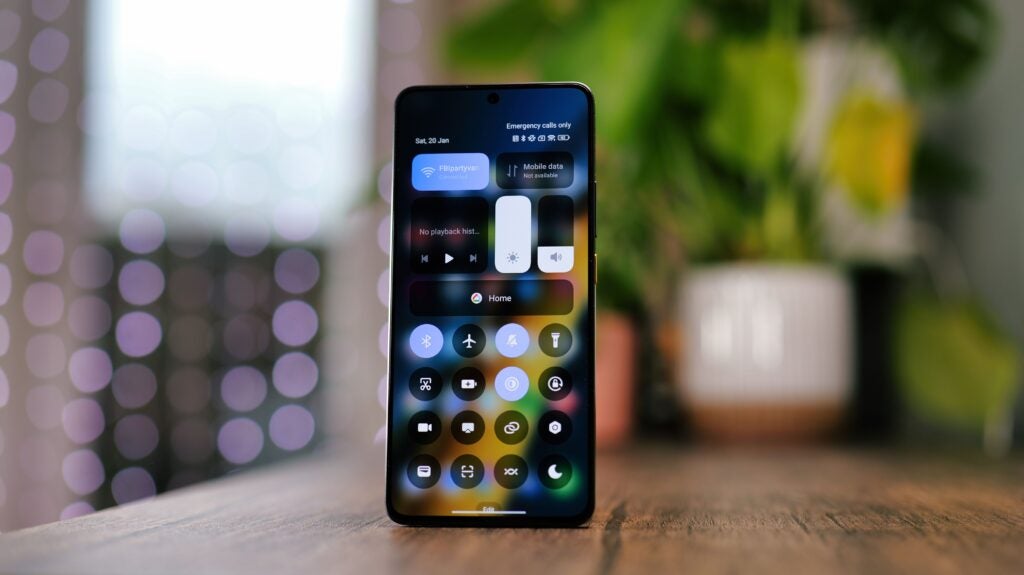

There’s a lot of bloatware installed by default, as is often the case with devices in this price range. You’ll find all manner of things cluttering up the home page, from social media apps like Facebook and TikTok to a folder full of random games. It can be cleaned up in a few minutes, but the sheer amount of apps makes it more of a hassle on the Poco than some other competing devices.
Battery life
- 5000mAh battery
- Up to 67W fast charging support
- Charger included in the box
The Poco X6 Pro has a relatively large 5000 mAh battery pack, and it’s good enough to see you through the day with ease. Having just tested the Honor Magic 6 Lite, which can happily go two days or more on a charge, this phone is noticeably less efficient, but then, it’s a lot more powerful, too.
Essentially, you’ll need to be in the habit of charging every night, but most people are, so it’s unlikely to cause issues.


The phone comes with a 67W fast charger in the box and it’ll take you from completely flat to 100% in about 45 minutes. A 50% charge can be achieved in under 20 minutes, so keeping the Poco X6 Pro topped up is no trouble at all.
Latest deals
Should you buy it?
You want serious gaming performance at a budget price
You’d be hard-pressed to find a more powerful phone at this price; it’s brilliant for gaming.
You want a clean Android experience
With lots of bloatware pre-installed and advertisements in some of the system apps, it’s about as far from stock Android as you can get.
Final Thoughts
The Poco X6 Pro is an incredible phone for the asking price, and for the most part, you could easily mistake it for a fully-fledged flagship handset. It’s only the weaker auxiliary cameras, the plastic frame and the bloatware that give away its value-orientated nature.
Elsewhere, you get a smooth, detailed and bright display, premium looks, a powerful processor and a very respectable main camera. It charges quickly, the software is good-looking and responsive, it’s just a great all-rounder.
There’s plenty of competition at this price, but I think the Poco X6 Pro stands out as an obvious choice for keen gamers. If you’re more into photography, the Google Pixel 7a is more capable in that department, and won’t set you back much more. The Samsung Galaxy A54 is worth considering, too, but neither can match the performance offered here.
How we test
We test every mobile phone we review thoroughly. We use industry-standard tests to compare features properly and we use the phone as our main device over the review period. We’ll always tell you what we find and we never, ever, accept money to review a product.
Find out more about how we test in our ethics policy.
FAQs
Poco promises three years of Android OS updates and four years of security updates.
Not fully, but the Poco X6 Pro carries an IP54 rating which means that it’s protected against dust ingress and splashes of water from all directions.
Yes, the Poco X6 Pro has 5G connectivity, as well as Wi-Fi 6 and Bluetooth 5.4.

